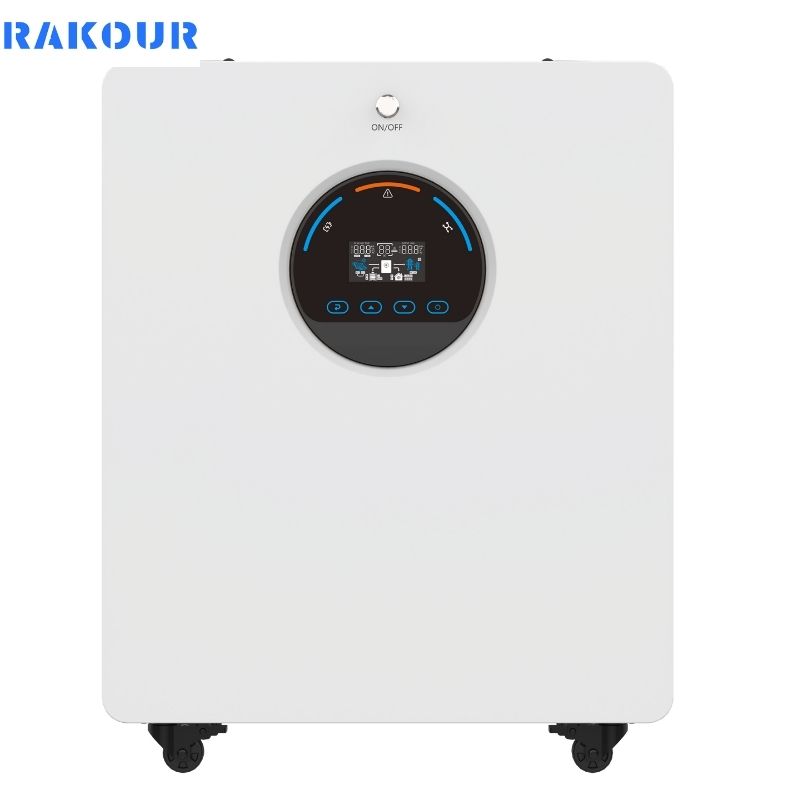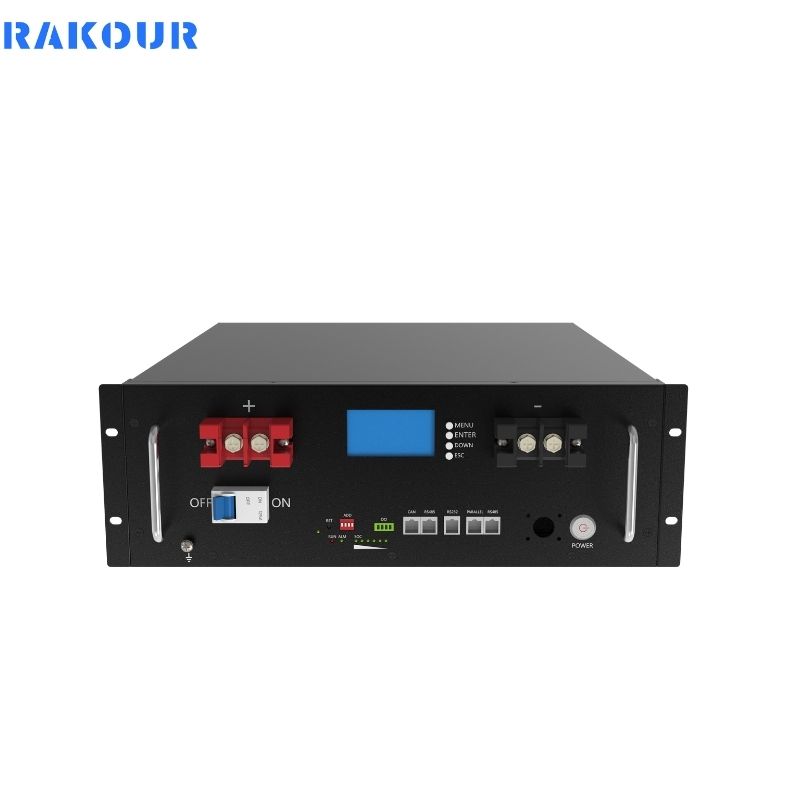Introduction to 12V Lithium Batteries
A 12-volt lithium battery is increasingly becoming the go-to power source for a variety of applications, ranging from recreational vehicles to renewable energy systems. Known for their efficiency and lightweight design, these batteries offer significant advantages over traditional lead-acid batteries. The most common type of 12V lithium battery is the lithium iron phosphate (LiFePO4), which provides enhanced safety and longevity.
Understanding the voltage characteristics of a 12V 100Ah lithium battery is crucial for users aiming to maximize performance and lifespan. Voltage levels are indicative of the battery’s state of charge (SoC), which informs users when to charge or replace the battery. For instance, a fully charged 12V 100Ah lithium ion battery typically reaches a voltage range of approximately 13.0V to 14.6V. As the battery discharges, its voltage decreases, and understanding these thresholds can help users maintain optimal performance.
Monitoring voltage is essential because discharging a lithium battery below specific levels can lead to irreversible damage. Therefore, knowing when a 12V battery lithium is considered “dead” is critical for users who want to extend their batteries’ lifespan and reliability.
In this blog, we will delve into various aspects of 12-volt lithium batteries, including when they are considered dead, optimal voltage levels for longevity, techniques for measuring and monitoring battery voltage, factors affecting lifespan, advantages and disadvantages, and best practices for maintenance.
Understanding When a 12V Lithium Battery Is Considered Dead
A 12-volt lithium battery is typically regarded as “dead” when its voltage drops to around 11.4V to 11.5V. At this point, the battery has effectively reached 0% SoC and should not be discharged further, as doing so can lead to significant damage to the cells. Prolonged use at this low voltage can result in diminished capacity and overall performance degradation.
Here are some key points regarding the voltage thresholds for a 12V 100Ah lithium battery:
- Fully Charged: Approximately 13.0V – 14.6V, depending on specific charging conditions.
- 50% Charge: Around 12.0V, which indicates that the battery is halfway depleted.
- Dead Voltage: Approximately 11.4V – 11.5V, signaling that the battery is at 0% charge.
- Critical Low Voltage: Discharging below 10.0V can cause irreversible damage to the internal chemistry of the battery.
To maintain optimal health, it is advisable to keep the voltage above 11.8V, which corresponds to about 30% charge. Regularly allowing your battery to reach voltages below this threshold can significantly shorten its lifespan.
Understanding these thresholds is essential for anyone using a 12v 100ah lithium ion battery, whether for powering electric vehicles or as part of an off-grid solar power system.
Optimal Voltage Levels for Longevity

Maintaining optimal voltage levels in a 12-volt lithium battery is crucial for ensuring both longevity and performance. The following table outlines the recommended voltage levels associated with different states of charge:
| State of Charge | Voltage Range |
|---|---|
| Fully Charged | 13.0V – 14.6V |
| 50% Charge | ~12.0V |
| Low Charge | ~11.8V |
| Dead | 11.4V – 11.5V |
| Critical Low | <10.0V |
To maximize the lifespan of your 12v battery lithium, it’s important to adhere to these guidelines:
- Charge Regularly: Avoid letting your battery discharge below 11.8V; charging at this level helps prevent deep discharges that can harm the cells.
- Monitor Voltage: Utilize a multimeter or a dedicated battery management system (BMS) to keep track of your battery’s voltage regularly.
- Avoid Overcharging: Ensure that charging does not exceed the maximum voltage of around 14.6V, as overcharging can also damage the cells.
By maintaining your 12v 100ah lithium battery within these optimal ranges, you can significantly enhance its performance and lifespan while minimizing risks associated with deep discharges or overcharging.
If you need assistance with selecting the right charger or have questions about your battery’s maintenance needs, don’t hesitate to reach out! Contact us today for expert advice tailored to your situation.
Additionally, insights from Battery University emphasize that maintaining proper charging practices not only extends battery life but also enhances safety by preventing overcharging scenarios that could lead to thermal runaway—a critical concern in lithium-ion technology (Battery University). For those interested in assembling their own batteries, you might find our guide on how to assemble a 12v lithium battery pack with 3.7v 18650mAh cells particularly useful.
Measuring and Monitoring Battery Voltage
Accurate measurement and monitoring of your 12-volt lithium battery’s voltage are essential practices that help prevent premature failure and ensure reliability in your power systems.
Techniques for Accurate Measurement
- Multimeter Usage: A digital multimeter is an effective tool for measuring voltage directly from the terminals of your battery, providing real-time data on its state of charge.
- Battery Management System (BMS): A BMS not only monitors voltage but also manages charging cycles and protects against over-discharge scenarios, enhancing overall safety.
Tools and Equipment Needed
- Digital Multimeter
- Battery Management System
- Voltage Monitoring App (for smart batteries)
Regularly checking your battery’s voltage helps you stay informed about its health status, allowing you to take action before it reaches critical low levels.
By implementing these techniques, you can effectively monitor your 12v 100ah lithium ion battery, ensuring optimal performance and extending its operational life.
If you’re looking for reliable solutions or need help with your current setup, our team is here to help! Get in touch with us today!
Moreover, understanding how different types of batteries function can provide valuable context for monitoring practices; for instance, Lithium Iron Phosphate (LiFePO4) batteries have unique charging characteristics that differ from traditional lead-acid batteries (Battery University). If you’re curious about how these batteries compare specifically with AGM deep cycle batteries, check out our article on how 12-volt lithium-ion batteries compare to 12-volt AGM deep cycle batteries.
Factors Affecting Battery Lifespan
Several factors influence the lifespan of a 12-volt lithium battery, including usage patterns, environmental conditions, and maintenance practices.
Usage Patterns
Frequent deep discharges can significantly shorten a lithium battery’s lifespan compared to shallow discharges that maintain higher average voltages throughout their cycles.
Environmental Conditions
Extreme temperatures—both hot and cold—can adversely affect performance:
- High temperatures accelerate degradation by increasing internal resistance.
- Low temperatures may temporarily reduce capacity but can also lead to permanent damage if not managed properly.
Maintenance Practices
Proper maintenance includes regular monitoring of voltage levels and ensuring that charging practices align with manufacturer recommendations.
By understanding these factors, users can adopt strategies that promote longer-lasting performance from their lithium batteries, ultimately saving money while enhancing reliability across various applications—from RVs to renewable energy systems.
Advantages and Disadvantages of 12V Lithium Batteries
When considering whether to invest in a 12-volt lithium battery, it’s essential to weigh both advantages and disadvantages:
Advantages
- Higher Energy Density: Lithium batteries provide more energy per unit weight compared to traditional lead-acid options, making them ideal for applications where space is limited.
- Longer Lifespan: With proper care, they can last several years longer than lead-acid batteries—often exceeding 2000 cycles compared to around 300–500 cycles for lead-acid.
- Faster Charging Times: Lithium batteries typically charge faster than their lead-acid counterparts due to their lower internal resistance.
Disadvantages
- Higher Initial Cost: The upfront investment for lithium batteries tends to be higher; however, this cost may be offset by their longer lifespan and lower maintenance needs.
- Temperature Sensitivity: Performance may vary significantly under extreme temperature conditions; thus, it’s important to manage operating environments carefully.
- Need for Monitoring Systems: Implementing a BMS or regular monitoring is necessary to prevent damage from over-discharge or overcharging—a critical aspect that requires attention from users.
By understanding these pros and cons, consumers can make informed decisions about whether a 12v 100ah lithium ion battery is suitable based on application requirements and budget constraints.
Best Practices for Maintaining Your Lithium Battery
To ensure that your 12-volt lithium battery remains in optimal condition throughout its life cycle, consider implementing these best practices:
Charging Recommendations
- Charge regularly before reaching low voltages (below 11.8V) to avoid damaging the cells.
- Use chargers specifically designed for lithium batteries; this helps avoid overcharging or undercharging situations that could harm performance.
Storage Tips
- Store in a cool, dry place away from direct sunlight; excessive heat can accelerate degradation.
- If storing long-term, ensure the charge level is around 50% (approximately 12V) to maintain cell health during inactivity periods.
By following these best practices, you can significantly enhance the longevity and reliability of your lithium batteries, ensuring they perform well when you need them most—whether in an RV trip or as part of an off-grid solar setup.
If you’re interested in building custom setups with multiple cells or configurations like creating a 12 volt system with a lithium battery, we have resources available that guide you through those processes as well!
Lear Our Realted Products
recommended reading
Conclusion
In conclusion, understanding how to manage a 12-volt lithium battery, including when it is considered dead and how to maintain optimal voltage levels, is crucial for anyone relying on this technology for power solutions.
By adhering to recommended practices such as regular monitoring of voltage levels and understanding factors affecting lifespan, users can maximize their investment in these advanced energy storage solutions like the 12v 100ah lithium ion battery while minimizing potential pitfalls associated with improper usage or neglecting maintenance needs.
Ultimately, keeping your lithium batteries healthy contributes not only to better performance but also enhances safety across various applications—from recreational vehicles to renewable energy systems—making them an excellent choice in today’s energy landscape where efficiency meets sustainability (McKinsey). For more detailed information on when a lithium battery is considered dead, check out our dedicated article on at what voltage is a 12 volt lithium battery considered dead.
Learn How RAKOUR Can help you deploy
future-proof energy
Our team of energy storage experts will take the time to fully understand your business, challenges , and opportunities.

Which is Better: LiFePO4 or Lithium Battery?
LiFePO4 and traditional lithium-ion batteries each present unique advantages and disadvantages, with the decision between

How long does a 12 volt deep cycle marine battery last
The lifespan of a 12-volt deep cycle marine battery is influenced by various factors, including

Understanding RV Batteries: Types and Uses
RV batteries are essential for powering a range of appliances and systems in recreational vehicles.

How to Charge Golf Cart Batteries: A Comprehensive Guide
This blog explores effective methods for charging golf cart batteries, emphasizing safety, preparation, and maintenance

How to Hook Up Golf Cart Batteries: A Comprehensive Guide
Learn how to safely and effectively hook up golf cart batteries in this detailed guide.

What is the full charge of LiFePO4 48V battery?
LiFePO4 (Lithium Iron Phosphate) 48V batteries are integral to numerous applications, with their voltage levels
FAQs















